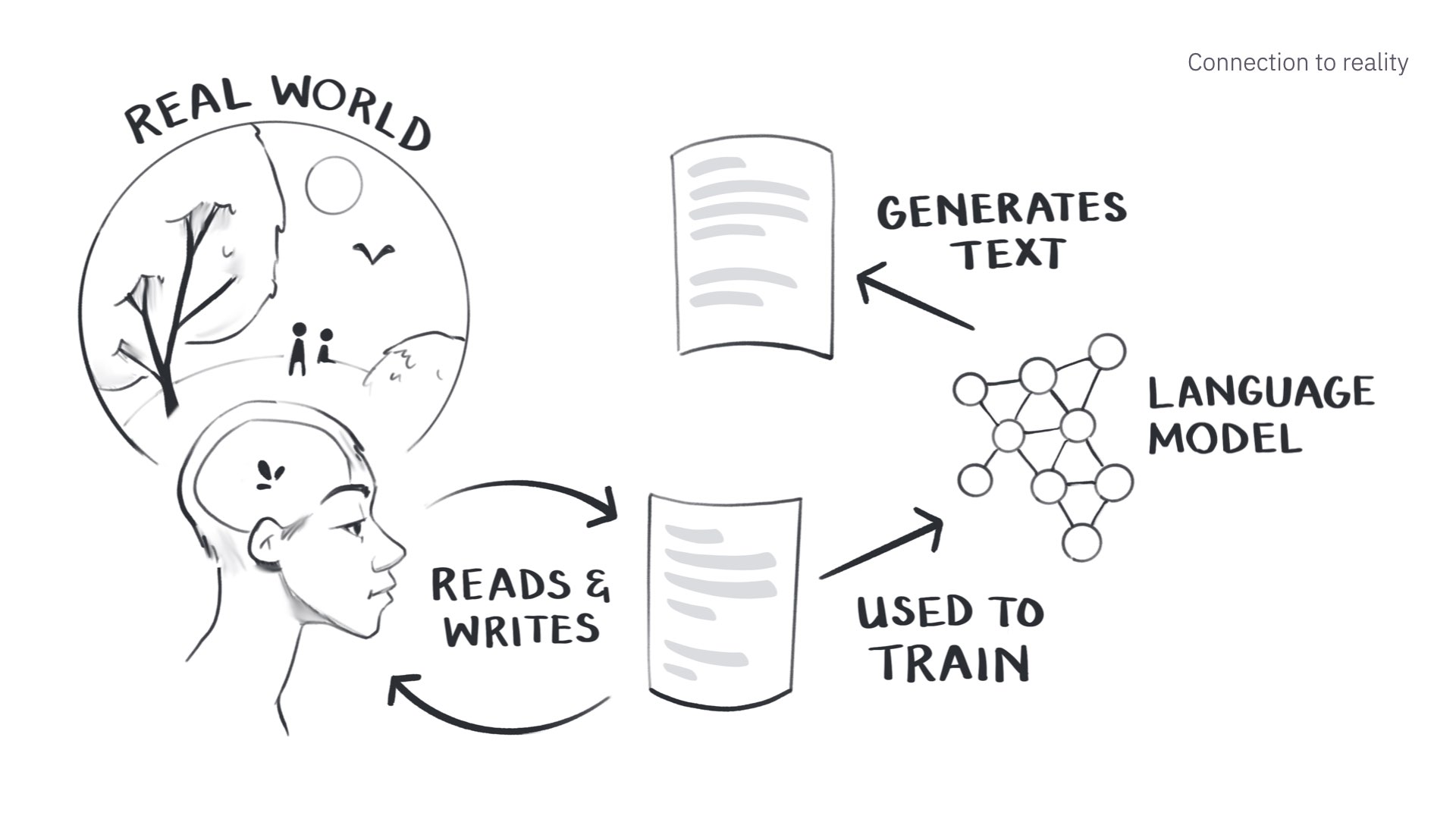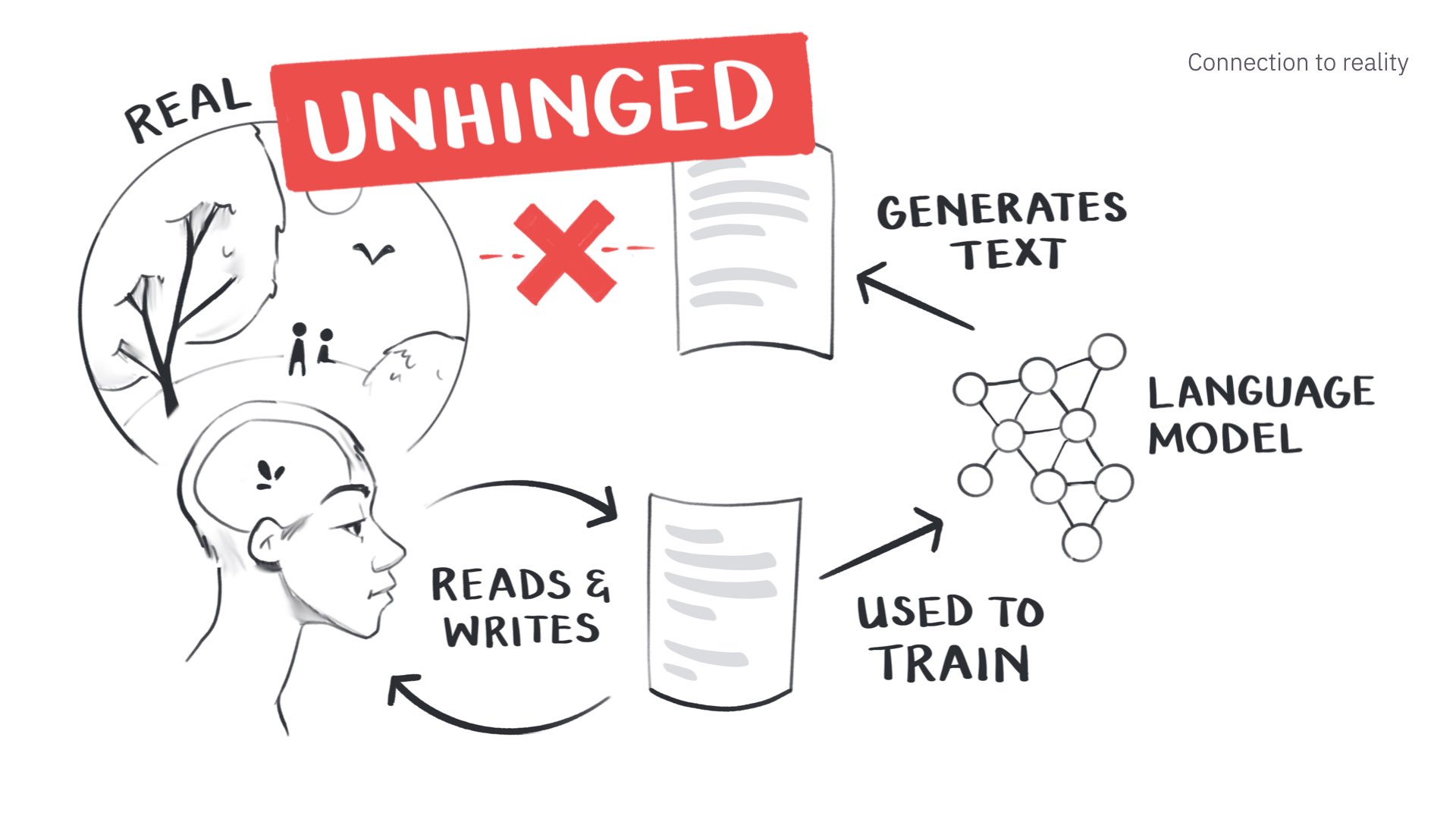Sự khác biệt giữa con người và mô hình ngôn ngữ lớn là con người có niềm tin và có thể kiểm chứng niềm tin từ môi trường bên ngoài
We are embodied humans in a shared reality filled with rich embodied sensory information.
When we read, we compare other people’s accounts of reality against our own experiences. We question whether their views align with ours. And then we write our own accounts.
In doing this, we are all participating in this beautiful cycle of trying to make sense of everything together. This is the core of all science, art, and literature. We are trying to understand and teach each other things through writing.
We have now fed this enormous written record into large language models, encoding a bunch of patterns in their networks, creating a representation of the existing written knowledge of humanity.
This model can now generate text that is predictably similar to all the text it has seen before.
But the tricky bit is trying to figure out how much this generated text relates to reality.

In some sense, it’s fully UNHINGED.
The model cannot check its claims against reality because it can’t access reality.
But it’s a bit like a fuzzy memory of reality.
It is based off what we’ve written about the world, but can’t validate its claims.

Trí não con người có nhiều thứ để đối chiếu với thực tại trước khi dùng tới ngôn ngữ.
Có một vấn đề là những nơi gặp được nhiều tương tác thực sự từ con người là những nơi được sàng lọc kỹ. Những nơi này thường bot cào không vào được.
Nguồn:: Maggie Appleton,
Talk: The Expanding Dark Forest and Generative AI
The Expanding Dark Forest and Generative AI